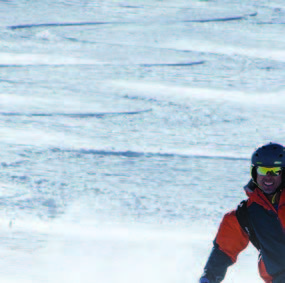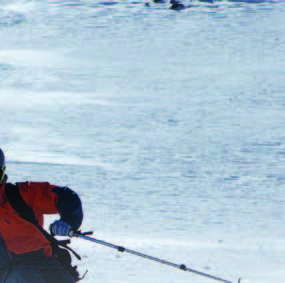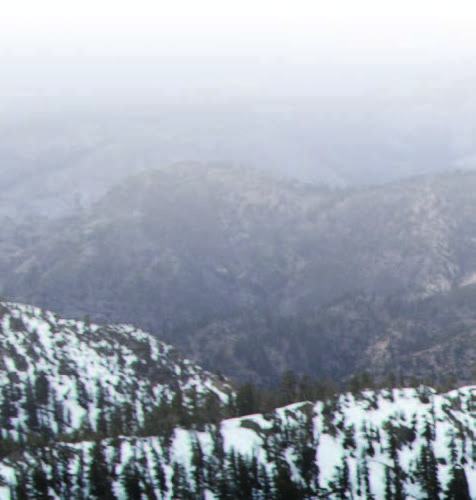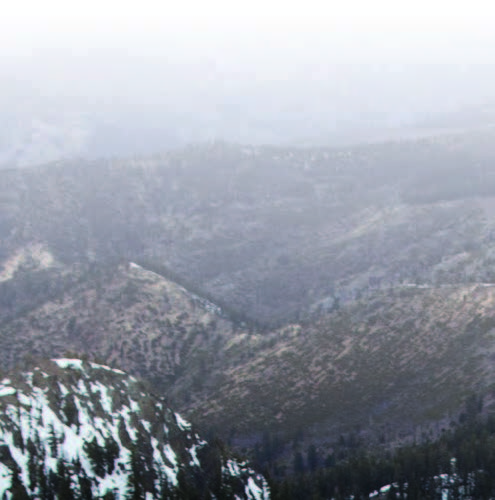Mt. Rose: Winter’s Fickle Bloom
March – April 2015
On the Nevada side of Lake Tahoe, great backcountry skiing depends on Mother Nature, but always delivers a fun adventure.
STORY BY DAVE ZOOK
PHOTOS BY MATT BANSAK
In mid-December, approaching the summit of Mt. Rose Highway—30 minutes from Reno on State Route 431—the area buzzed with human activity. Hundreds of families played in the snow, while groups of snowshoers, skiers, and snowmobilers pushed into the mountains. Early season storms in late 2014 had dolloped the Tahoe area with hefty precipitation, but with consistent rain at lake level and a snowline at about 8,000 feet, the high-elevation Rose area became the best backcountry ski destination around.
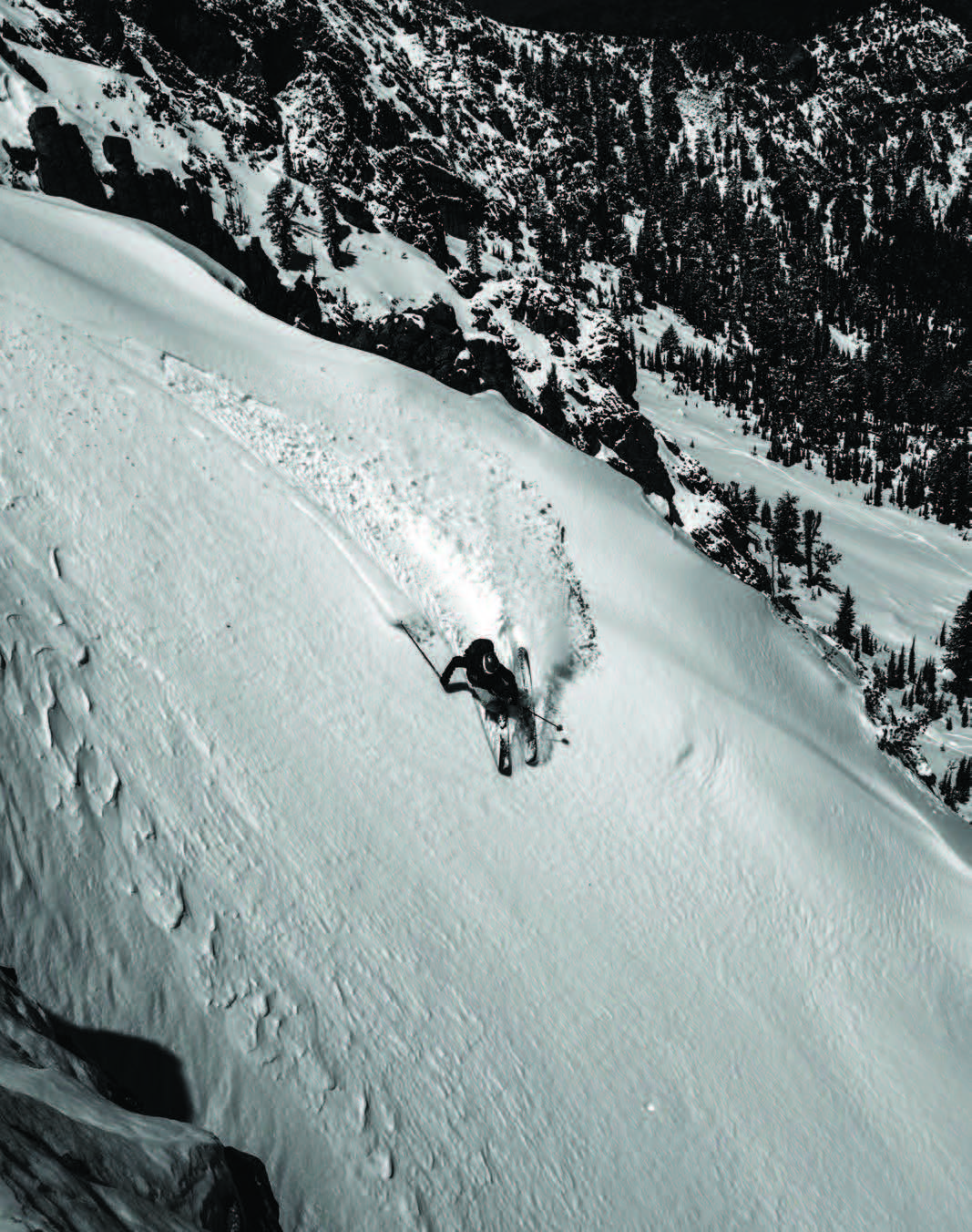
Now in late January, my friend Matt Bansak and I pulled into the parking area on the pass at 8,911 feet. This time, there was not a soul around.
The fresh snow had stopped as the calendar year turned over. The Tahoe region received virtually zero precipitation in January, and consistently high temps melted the snow in the daytime and froze it to the consistency of coral reef overnight. But there were murmurs of a few pockets of powder still out there if you knew where to look.
“This is going to be a great time; let’s get after it and make our friends jealous via social media,” said Matt, an eternal supporter of getting outside, skiing, and taking photos.
“I bet there could be some decent options…we can’t not try,” I replied.
Options of all flavors define the umbrella area known as Rose, which refers to terrain accessed off the highway of the same name, but the titling gets strange. Mount Rose the peak—the third highest in Tahoe at 10,776 feet—is on the west side of Mt. Rose Highway, while the ski area— Mt. Rose Ski Tahoe—is on the east side of the highway and is actually on Slide Mountain. Just a few miles west of the summit is the boundary of the 31,310-acre Mt. Rose wilderness area, with Rose Knob Peak out there somewhere as well.
Nevertheless, it all sits in Nevada and offers a wonderful spectrum of backcountry skiing with hundreds of available lines and dozens of peaks. Casual hour-long hikes to low-angle slopes cater to the beginner, and grueling all-day affairs to 50-degree couloirs entice the experienced and gutsy skier. Snowmobiling is also allowed in a large portion of Rose, a rarity for much of Tahoe.
THE LONG WALK
We slapped on our skins, Matt’s to his skis and mine to my splitboard, and checked our beacons under the grey but warming skies. From our pullout, one has decisions to make. The closest is the user-friendly 9,990-foot Tamarack peak. To get to its summit, you just gain the ridgeline that begins up the hill next to the parking lot and follow it northeast to the peak. Another popular access point is about a mile north on the highway at another established pullout and from there you skin basically straight west about a mile and you’re on the peak where several short yet sweet options await. On powder days, Tamarack may be one of the most heavily trafficked areas.
But we wanted to explore Relay Peak, due to its longer lines and the option of continuing to the steep Bronco Chutes. Just a few hundred feet south from the parking area is a Forest Service road that links with the Tahoe Rim Trail—the 165-mile loop that circumnavigates the Basin. Once on this road, orienteering is a snap and it’s a simple slog that contours around the south of Tamarack before the road gives way to the open flats below Relay.
The milky skies had us wondering if the frozen snow would see any type of softening. But as skiing and snowboarding enthusiasts know this is part of the game, and in fact, this is the game. The positives on days like these—fresh air, exploring, getting in shape, the chance to play—trump any potential complaining.
Almost five miles later we reached the top of 10,335-foot Relay Peak, the highest point on the Tahoe Rim Trail. Views of the east shore of Lake Tahoe stretch down the horizon and the clouds add a silver glean to its smooth surface. From here we can ski off Relay in several directions; from short lines on the southeast face, to longer chutes to the north. Farther along the ridge to the north of Relay lie the Bronco Chutes, a consortium of steep lines and a favorite for advanced skiers. If we dropped to the north, it would at least put us closer to Bronco.
“Ski the north side toward Bronco and decide after the run,” posited Matt. Now in the early afternoon, daylight needed to be considered, but the Bronco Chutes pulled us in like magnets with their thick conglomeration of craggy rocks and mysterious lines.
“Sure thing. Would be sweet to check that off the list,” I said in agreement.
We dropped into the north face and found variable conditions, a euphemism for conditions that really aren’t that good. There were a few chalky and smooth sections, a few short, soft, wind-filled pockets, and plenty of ice and hardpack.
At the bottom looking toward the Bronco Chutes, the distance now seemed overwhelming. The trek would have taken at least two more hours, and combined with the questionable snow, it no longer made sense.
Getting back up the ridgeline to Relay proved more diffi cult than expected. After losing my traction, I found myself on a slope mere feet from a flat section, but on my side and crawling the last few inches like a small child. Matt’s ski popped off after slipping out and he went down; his smartphone careened to the edge of the ridge, inches from plummeting into the abyss.
HOMEWARD
Making it back to the top of Relay, we dropped into an easy section that lined us up with the access road that would deliver us to the parking lot. We still had a long return back to the car, and the slight downhill grade made for a steady pace, although the lower we got the more the surface resembled mangled chunks of a substance formerly known as snow.
It was an honest effort covering almost 10 miles, and though it never softened and we didn’t find a mystical stash of powder, we were now more prepared for when the big storms come, as they can in late spring. Friends had started biking or trail running, but we wanted to stay true to our favorite sport. I spent all day outside and didn’t see a single other group, and I won’t hesitate to return when the snow does…which it will.


